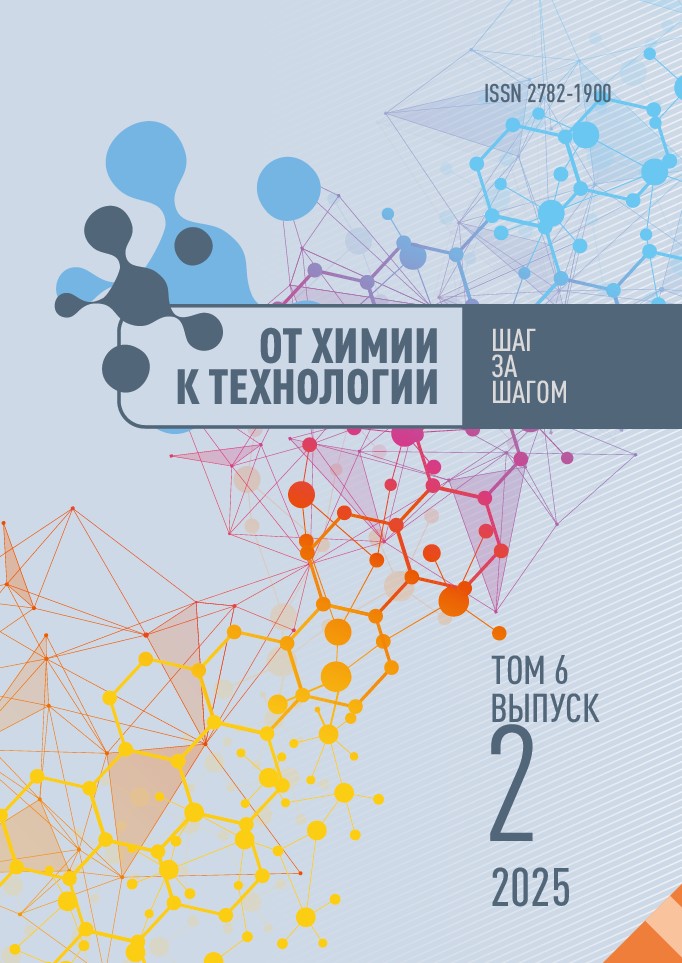Иваново, Ивановская область, Россия
Иваново, Ивановская область, Россия
Иваново, Ивановская область, Россия
Иваново, Ивановская область, Россия
Иваново, Ивановская область, Россия
УДК 544.478 Катализаторы
The vanadium oxide-based systems on various carriers are of great interest for the obtaining of catalysts for natural gas processing and organic synthesis. An important stage in the development of sulfuric acid catalysis was obtaining of sulfovanadium catalysts based on diatomite. The catalyst is easy to manufacture, sufficiently durable, and has a relatively long service life. It is necessary to process deactivated vanadium contact masses due to the high hazard of spent vanadium catalysts to humans and the environment, as well as the scarcity and high cost of vanadium compounds. In this regard, there is a need to determine the causes of deactivation of sulfuric acid vanadium catalysts of the SVD brand after their operation. All studied samples have low specific surface area and porosity, indicating the destruction of the support. X-ray spectral analysis indicates a low content of V2O5. This is due to the presence of impurities in the diatomite. Aluminum and iron oxides interact with potassium pyrosulfovanadate. As a result of this reaction, there is a formation of aluminum-potassium and iron-potassium alums. Consequently, is causes the release of V2O5 crystalline phase. This leads to a sharp change in the composition and properties of the active component and decreasing of activity. The results of X-ray diffraction studies show that all studied samples contain crystalline forms of diatomite, predominantly in its high-temperature modification – cristobalite. A significant amount of cristobalite leads to a disruption in the mechanical strength of the granules and a low specific surface area.
sulfur dioxide, vanadium catalyst, deactivation, cristobalite, surface layer morphology, activity
1. Weckhuysen B. M., Keller D. E. Chemistry, spectroscopy and the role of supported vanadium oxides in heterogeneous catalysis. Catal. Today, 2003, 78(1-4), 25–46. DOI:https://doi.org/10.1016/S0920-5861(02)00323-1.
2. Dosumov K., Ergazieva G. E. Morphology and activity of vanadium-containing catalysts for the selective oxidation of benzene to maleic anhydride. Russ. J. Phys. Chem., 2012, 86 (11), 1897–1899 (in Russian).
3. Boreskov G.K. Catalysis in the production of sulfuric acid. Moscow: Khimiya, 1954, 348 p. (in Russian).
4. Yeshchenko L.S. Technology of mineral fertilizers, salts and alkalis. Moscow: BSTU, 2015, 167 p. (in Russian).
5. Amelin A.G. Technology of sulfuric acid. Moscow: Khimiya, 1983, 360 p. (in Russian).
6. Ivakin A. A., Yatsenko A. P., Glazyrin M. P., Krasilnikov V. I. Chemistry of synthesis processes of vanadium catalysts for sulfur dioxide oxidation. RJAC, 1982, 55 (2), 344-350 (in Russian).
7. Petrovskaya G. I., Gerke L. S., Talanova V. N., Vatkeeva E. N. in the book Catalysts for Sulfuric Acid Production, edited by SB ICS USSR, Novosibirsk, 1990, 47 (in Russian).
8. Greg S., Sing K. Adsorption, specific surface area, porosity. M. : Mir, 1984, 306 p. (in Russian).
9. Plyasova L.M. Introduction to X-ray diffraction of catalysts. IK SB RAS, 2001, 65 p. (in Russian).
10. Institute of Experimental Mineralogy. Russian Academy of Sciences.: Crystallographic and Crystallochemical Database for Minerals and their Structural Analogues, 1997. Available at: http://database.iem.ac.ru/mincryst (accessed 26.03.2025).
11. Glukhovsky N.G., Vorobyeva G.F. Effect of alkali metal sulfates on the contact properties of a vanadium-containing catalyst for naphthalene oxidation. RJAC, 1981, 61 (4), 926-928 (in Russian).
12. Cherepkov G.V., Mukhlenov I.P., Shevyakov A.M., Dobkina E.I. The role of aluminosilicate gel and potassium sulfate in the formation of a vanadium catalyst. Kinetika i kataliz, 1976, 17 (1), 204-207 (in Russian).
13. Zaitsev M.P., Talanova V.N., Smirnova I.S. Change in the composition of spent vanadium sulfuric acid catalyst by layer depth in the contact apparatus. Zh. Khim. Prom., 1992, 2, 9 (in Russian).
14. Gordina N.E. Methods for intensifying physicochemical processes in the technology of catalyst and adsorbent production. I.: Ivanovo Publishing House, 2023, 324 p. (in Russian).
15. Neimark I.E. Sheinfain R.Yu. Silica gel, its production, properties and application. K.: Naukova Dumka, 1973, 199, (in Russian).
16. Eiler R. Chemistry of silica. In 2 volumes. Moscow.: Mir, 1982, 1127 p. (in Russian).







